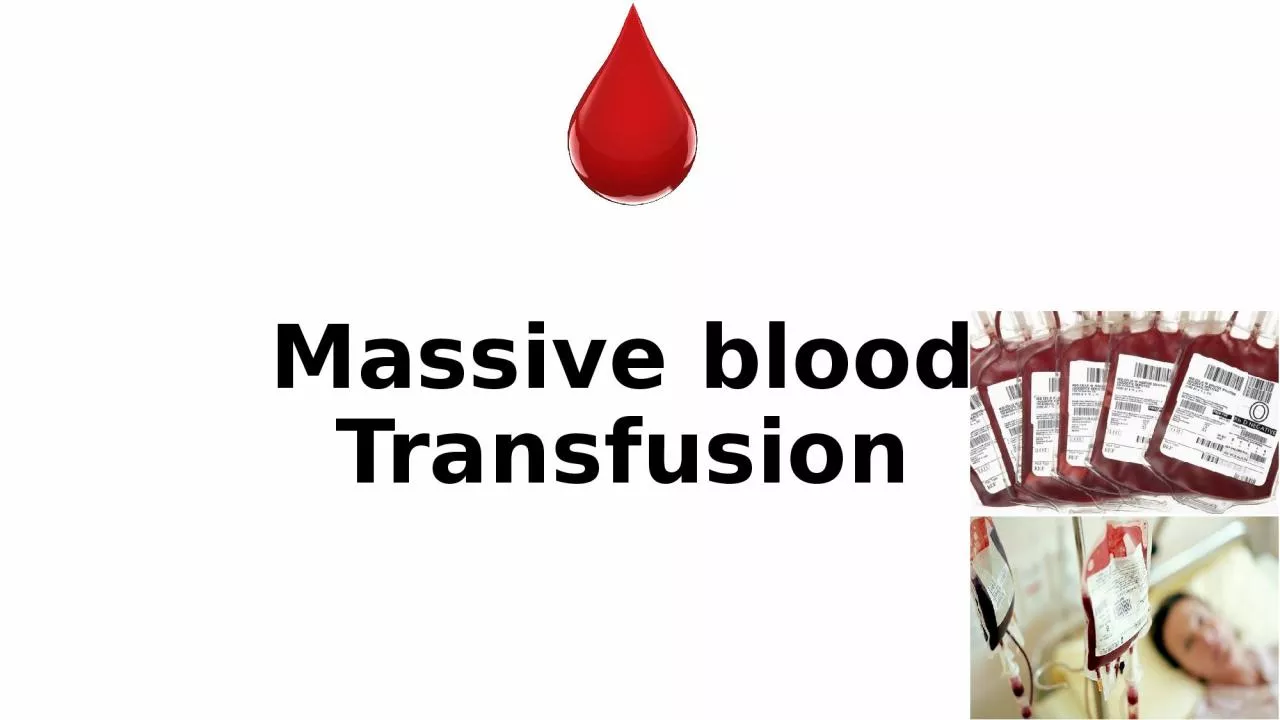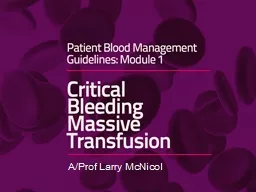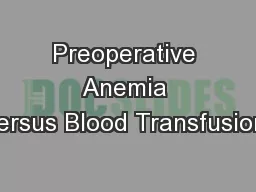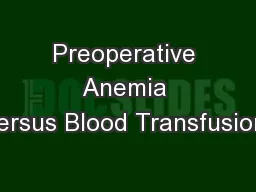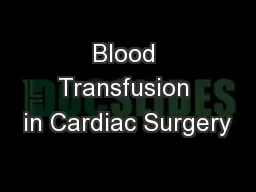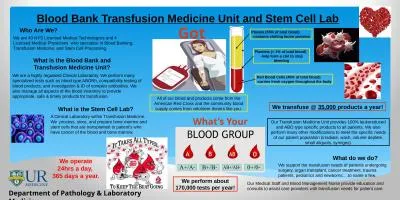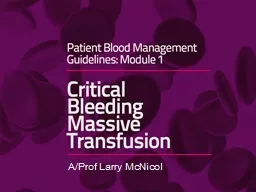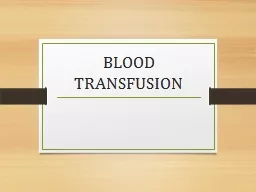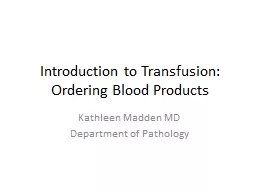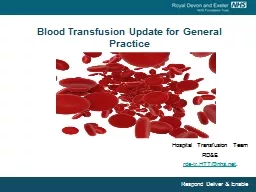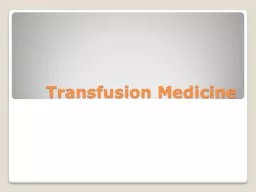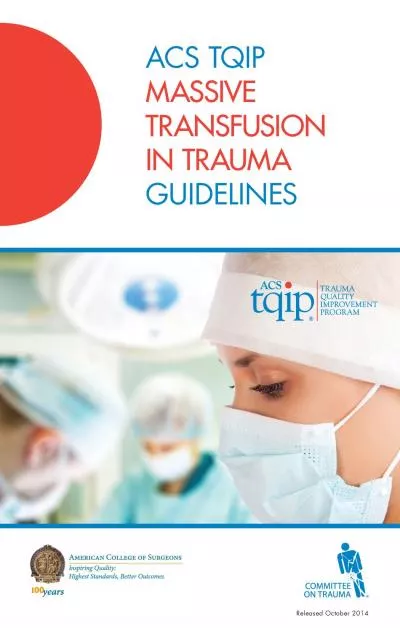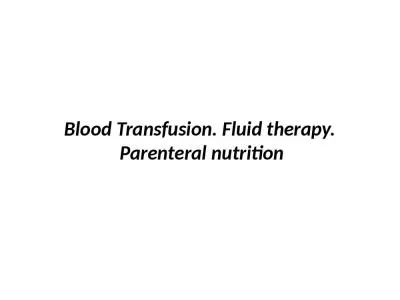PPT-Massive blood Transfusion
Author : zoe | Published Date : 2022-06-15
Massive transfusion protocol MTPs Established to provide rapid blood replacement in a setting of severe hemorrhage Early optimal blood transfusion is essential
Presentation Embed Code
Download Presentation
Download Presentation The PPT/PDF document "Massive blood Transfusion" is the property of its rightful owner. Permission is granted to download and print the materials on this website for personal, non-commercial use only, and to display it on your personal computer provided you do not modify the materials and that you retain all copyright notices contained in the materials. By downloading content from our website, you accept the terms of this agreement.
Massive blood Transfusion: Transcript
Download Rules Of Document
"Massive blood Transfusion"The content belongs to its owner. You may download and print it for personal use, without modification, and keep all copyright notices. By downloading, you agree to these terms.
Related Documents

